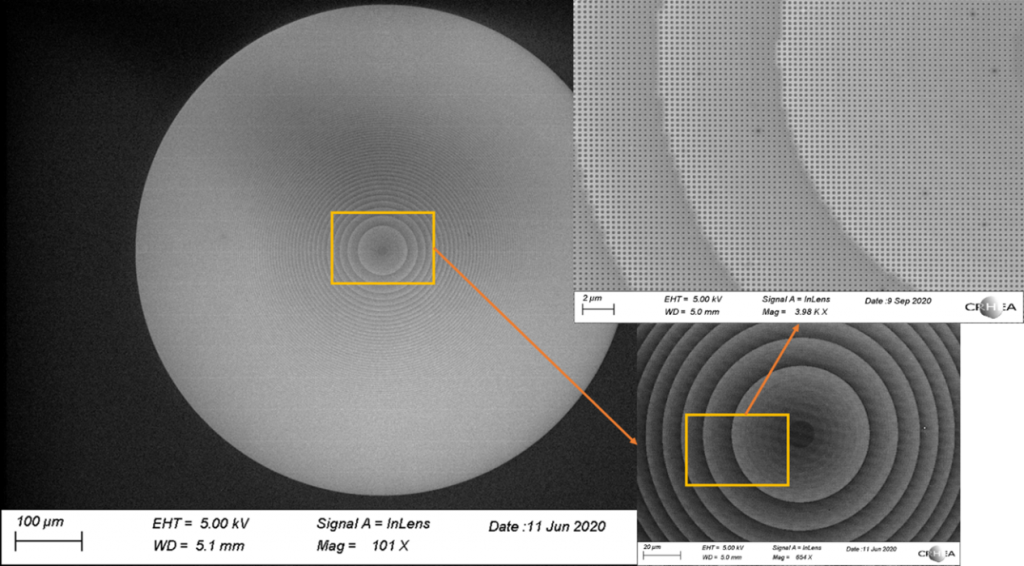Meta Surfaces
NAPA is involved in several projects to fabricate metasurfaces at the industrial scale.
Conventional photonic / optical components rely on the simple principles of light refraction, reflection or diffraction. The design of these photonic components is generally understood by considering the effects of light propagation through media over distances typically much larger than the wavelength. Wavefront shaping is achieved by gradually accumulating changes in amplitude, phase and / or polarization along the beam path. As an alternative, metamaterials have received a great deal of interest over the past two decades due to their unprecedented flexibility in manipulating electromagnetic waves. Metasurfaces are metamaterials artificially structured on a smaller scale than wavelength.

SEM Micrographe of a metalens

SEM Micrographe of metasurfaces sol-gel patterns
They get their optical properties not only from the intrinsic properties of the raw materials, but above all from the precise geometry, size, orientation and arrangement of their structural elements. Thus, it allows us to design optical materials with unexpected and sometimes specific properties, going beyond the limits of what is possible with existing materials. Several devices, such as super lenses or camouflage devices, have been developed over the past decade relying on this new metamaterial technology. By reducing the dimension of metamaterials to subwavelength thickness devices, it is now possible to modulate light direction, polarization and intensity using a simple optical interface. The technology of flat optical components, also known as metasurfaces, will dramatically change the design methods traditionally used for optical systems. The control of electromagnetic fields by nanostructured interfaces will have important repercussions in several fields such as lighting, imaging, displays and spectroscopy.